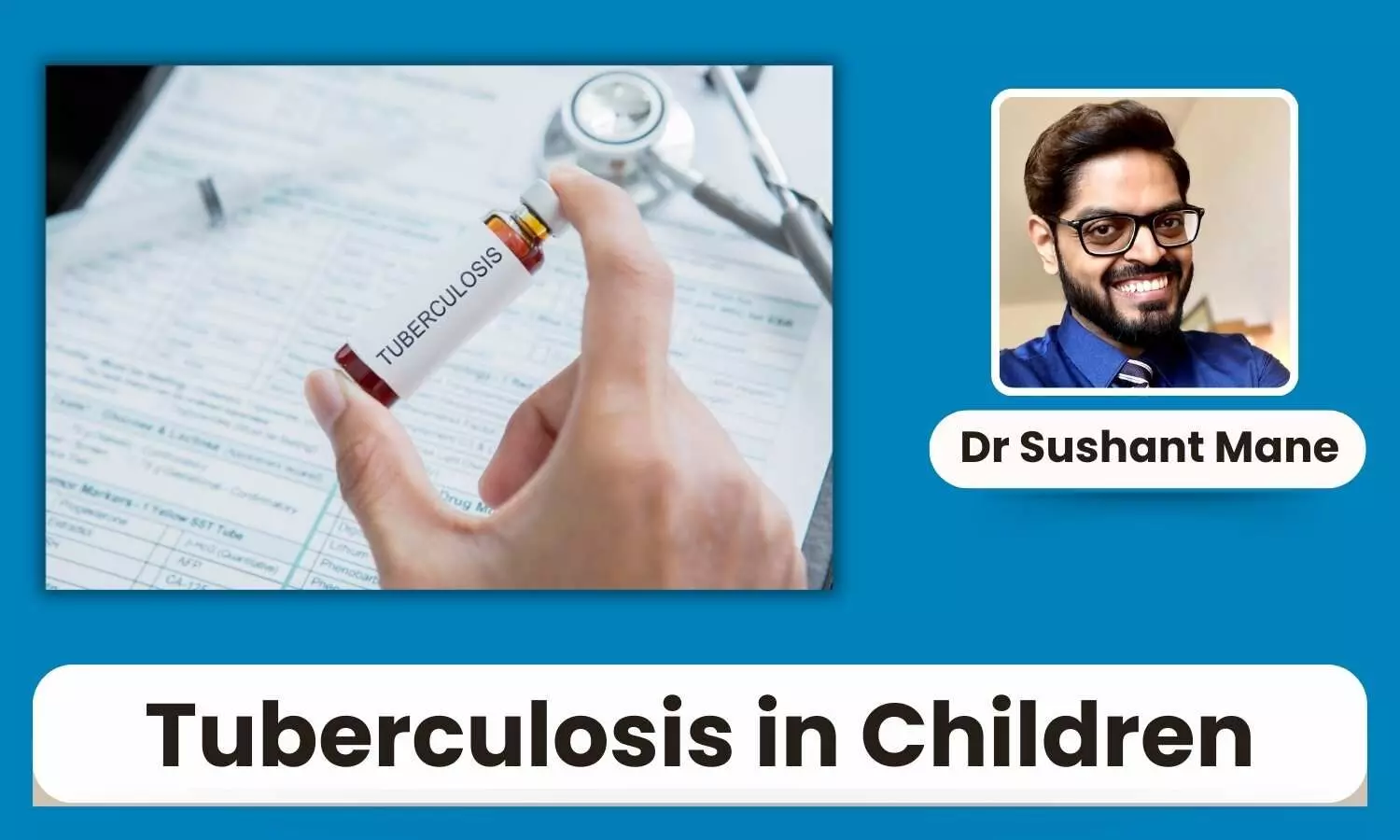Tuberculosis in Children: Management and Overcoming the Challenges - Dr Sushant Mane

Tuberculosis (TB) is not just an adult disease; it is also a significant concern for children, who account for 12 per cent of the global TB burden (Global TB Report, 2023). As per India TB Report 2023, India reported 1,35,921 paediatric TB cases, which account for about 31 per cent of the global paediatric TB burden. Paediatric TB diagnosis and management are faced with unique challenges, often differing in clinical presentation and treatment. Understanding these differences is vital to timely intervention and reducing mortality.
Tuberculosis in Children
Children, particularly those under the age of five, are more susceptible to TB due to their weaker immune systems. They can develop the disease quickly, often with non-specific symptoms, and are at risk of progressing to severe illness.
Pulmonary TB is the most common form of TB seen in children; however, the proportion of extra-pulmonary TB is higher in children as compared to adults. Diagnosing TB in children is challenging because TB symptoms in children often resemble those of other common childhood illnesses. It is also cumbersome to obtain pulmonary samples, as children tend to swallow sputum rather than expectorate it.
The lower sensitivity of microbiological tests in children complicates diagnosis. Additionally, the drug dosage requirements in children differ from adults due to their higher metabolic rates, necessitating larger doses. (MoHFW, 2019).
Recognizing Symptoms Early
Younger children face a higher risk of progression from TB infection to active disease, as well as developing severe forms of TB, such as meningitis or miliary TB and other disseminated forms. This heightened risk highlights the critical need for early symptom identification, TB prevention strategies, and vaccines, especially for children who are young, malnourished, or immunocompromised.
Recognizing symptoms early is the most crucial step in diagnosing TB. Any child with a persistent cough, fever, weight loss or inability to gain weight for a period lasting more than two weeks is considered a case of 'presumptive pulmonary TB.' TB should be viewed as a possible cause in case of any unexplained swellings, abdominal pain, changes in bowel movements, back pain, insidious onset meningitis or persistent symptoms of any system.
Diagnostic Tests for Paediatric TB
Obtaining bacteriological confirmation of TB diagnosis in young children is challenging because the disease in this age group is typically pauci-bacillary, and children cannot spontaneously expectorate sputum. Additionally, collecting non-sputum samples is almost always a complicated and invasive process.
India provides access to crucial tests recommended by the World Health Organization (WHO) free of cost under the National TB Elimination Program (NTEP). For children under six to seven years of age who can't produce sputum, gastric aspirates are used.
Rapid molecular tests are available to detect the presence of mycobacterium tuberculosis (MTB) and identify resistance to key drugs like rifampicin within a few hours. Further, tests like the Line Probe Assay (LPA) establish resistance patterns for critical anti-TB drugs such as fluoroquinolones and aminoglycosides. The liquid culture test, which serves as the gold standard, offers a more sensitive approach, particularly crucial in paediatric TB where the bacterial load is low.
Given that paediatric TB often involves primary drug resistance due to direct transmission from drug-resistant adult contacts, it is essential to establish a microbiological diagnosis in every patient.
Radiological investigations provide additional support in diagnosing TB. For presumptive pulmonary TB, a chest X-ray is the initial investigation. In cases where extra-pulmonary TB is suspected, further imaging diagnostic technologies such as an ultrasound or CT/MRI scans may be used depending on the symptoms and organ involvement. However, the need for microbiological diagnosis cannot be overstated.
Challenges in Private Sector Diagnostics
While the NTEP offers tests free of cost, challenges persist in the private sector. Each investigation is often charged separately, and there is poor standardization of the diagnostic tests offered, thereby affecting rational management treatment planning. The NTEP is an inclusive programme and extends its services even to the private sector through a public-private partnership model, thereby allowing for a standardized management of TB across the country. Hence, more and more private-sector medical practitioners must partner with NTEP to provide comprehensive care to patients with TB.
Treatment Challenges in Paediatric TB
Children need weight-based dosing of medications, complicating treatment, especially in resource-limited settings. The standard treatment for drug-sensitive TB includes an initial intensive phase of four drugs followed by a continuation phase consisting of three drugs, usually over six months.
The rise of drug-resistant TB has made treatment even more complex, requiring second-line drugs that often necessitate longer treatment durations of either nine to 11 months or 18 to 20 months and are associated with varying degrees of adverse effects.
In addition, the number of drugs is also higher, thereby raising the pill burden and issues with compliance and adherence with treatment regimens. Counselling is thus a crucial part of management to ensure compliance with treatment, along with a focus on nutrition and a healthy lifestyle to achieve optimal treatment outcomes.
Role of Vaccination in TB Prevention
Vaccination is a crucial preventive measure for TB in children. The Bacillus Calmette-Guérin (BCG) vaccine, administered to newborns in many countries, doesn't prevent the infection but protects against severe forms like miliary TB and TB meningitis, which have higher mortality rates.
Its efficacy against pulmonary TB varies, and it does not provide lifelong immunity. While a single dose at birth is recommended, global variations exist based on TB prevalence and healthcare policies.
The utility of adult BCG vaccination is under study in the country for high-risk groups, and further research into new vaccines is ongoing, aiming to develop more effective preventive strategies against TB. Simple measures like following cough etiquette and hand hygiene are effective strategies to curtail the spread of airborne infections like TB.
Conclusion
Paediatric TB requires a specialized approach due to its unique challenges in diagnosis and treatment. Early detection, individualized treatment, timely follow-ups, and vaccination are crucial in managing this silent epidemic. Healthcare providers and caregivers must collaborate to ensure timely management and safeguarding the health of affected children.


